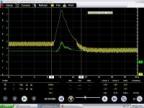*** Restricting New Posts to SD Premium Members ONLY *** (09 May 2025)
Just made a new account? Can't post? Click above.
difference between voltage drop and bias on control wire
- hse_me@yahoo.com
-
Topic Author
- Offline
- New Member
-

Less
More
- Posts: 1
- Thank you received: 1
6 years 3 months ago #32733
by hse_me@yahoo.com
difference between voltage drop and bias on control wire was created by hse_me@yahoo.com
Hello everyone .
i am still in section 3 materials and found some confusion to distinguish between voltage drop and bias on control wire . when i make my test when i can say its voltage drop not a bias ?
Thanks .
Ali
i am still in section 3 materials and found some confusion to distinguish between voltage drop and bias on control wire . when i make my test when i can say its voltage drop not a bias ?
Thanks .
Ali
The following user(s) said Thank You: aboudi.naddaf
Please Log in or Create an account to join the conversation.
- Chad
-

- Offline
- Moderator
-

- I am not a parts changer.
Less
More
- Posts: 2125
- Thank you received: 711
6 years 3 months ago - 6 years 3 months ago #32739
by Chad
"Knowledge is a weapon. Arm yourself, well, before going to do battle."
"Understanding a question is half an answer."
I have learned more by being wrong, than I have by being right.
Replied by Chad on topic difference between voltage drop and bias on control wire
A voltage drop is when the voltage that reaches the load is less than the source voltage. This can happen due to bad connections and corroded wires. The bad connection, or corrosion, acts like a resistor.
Bias voltage is a voltage sent out on a circuit, for fault detection purposes. It is passed through a very high resistor. It is, for lack of better wording, an INTENTIONAL voltage drop that the computer uses. When a circuit is OPEN (disconnected/broken wire), the voltage will be the same as the source of the bias voltage. But, when the circuit is CLOSED (connected/circuitry intact) the voltage will be pulled up, or down.
Bias voltage is a voltage sent out on a circuit, for fault detection purposes. It is passed through a very high resistor. It is, for lack of better wording, an INTENTIONAL voltage drop that the computer uses. When a circuit is OPEN (disconnected/broken wire), the voltage will be the same as the source of the bias voltage. But, when the circuit is CLOSED (connected/circuitry intact) the voltage will be pulled up, or down.
"Knowledge is a weapon. Arm yourself, well, before going to do battle."
"Understanding a question is half an answer."
I have learned more by being wrong, than I have by being right.
Last edit: 6 years 3 months ago by Chad.
The following user(s) said Thank You: ScannerDanner, Noah, CurrentDraw, Aleks1984, aboudi.naddaf
Please Log in or Create an account to join the conversation.
- Thomas Klein
-
- Offline
- New Member
-

Less
More
- Posts: 5
- Thank you received: 0
5 years 6 months ago #39862
by Thomas Klein
Replied by Thomas Klein on topic difference between voltage drop and bias on control wire
I have a question on this topic. If the control module uses the bias voltage to detect an open circuit on the coil circuit and possibly illuminate a CEL if it is open how does it see any difference between an open circuit or a completed circuit that is energized since it would see 12v in both cases.
Please Log in or Create an account to join the conversation.
- Landroverman1958
-

- Offline
- Premium Member
-

Less
More
- Posts: 93
- Thank you received: 17
5 years 6 months ago #39865
by Landroverman1958
Replied by Landroverman1958 on topic difference between voltage drop and bias on control wire
In most cases it sends a pulsed signal down the wire,if the wire is broken the return signal is not what it wants to see,it also knows if it is pulled to ground or shorted to voltage,
I maybe wrong, someone will correct me no doubt,
I maybe wrong, someone will correct me no doubt,
Please Log in or Create an account to join the conversation.
- Chad
-

- Offline
- Moderator
-

- I am not a parts changer.
Less
More
- Posts: 2125
- Thank you received: 711
5 years 6 months ago - 5 years 6 months ago #39868
by Chad
Generally, the control module does not supply power to the coils. Power comes from a fuse, or relay, and there is not a bias on the POWER side. The bias is on the CONTROL side. When energized, the control side should be, nearly, 0v. When not energized, the control side will see the 12v POWER, coming through the coil windings, unless there is an OPEN in the circuit. With an OPEN, the module will see bias voltage. With a short to GROUND, the bias will be pulled to ground.
"Knowledge is a weapon. Arm yourself, well, before going to do battle."
"Understanding a question is half an answer."
I have learned more by being wrong, than I have by being right.
Replied by Chad on topic difference between voltage drop and bias on control wire
Thomas Klein wrote: how does it see any difference between an open circuit or a completed circuit that is energized since it would see 12v in both cases.
Generally, the control module does not supply power to the coils. Power comes from a fuse, or relay, and there is not a bias on the POWER side. The bias is on the CONTROL side. When energized, the control side should be, nearly, 0v. When not energized, the control side will see the 12v POWER, coming through the coil windings, unless there is an OPEN in the circuit. With an OPEN, the module will see bias voltage. With a short to GROUND, the bias will be pulled to ground.
"Knowledge is a weapon. Arm yourself, well, before going to do battle."
"Understanding a question is half an answer."
I have learned more by being wrong, than I have by being right.
Last edit: 5 years 6 months ago by Chad.
Please Log in or Create an account to join the conversation.
- Noah
-

- Offline
- Moderator
-

- Give code definitions with numbers!
Less
More
- Posts: 4935
- Thank you received: 1100
5 years 6 months ago #39888
by Noah
"Ground cannot be checked with a 10mm socket"
Replied by Noah on topic difference between voltage drop and bias on control wire
I'd just like to add my perception to bias voltage. I view it as the computer's internal ohm meter in action.
If you have two multi meters, set one to ohms and one to volts.
Measure the voltage of the ohm meter. This voltage (which varies from meter to meter) is essentially your bias voltage.
If you have two multi meters, set one to ohms and one to volts.
Measure the voltage of the ohm meter. This voltage (which varies from meter to meter) is essentially your bias voltage.
"Ground cannot be checked with a 10mm socket"
Please Log in or Create an account to join the conversation.
Time to create page: 0.278 seconds
